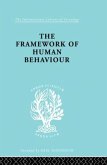Matthias Muhlert
Red Team Evaluation Framework
Sharpening the Spear: A Framework for Forging and Measuring an Elite Adversary Emulation Team
Matthias Muhlert
Red Team Evaluation Framework
Sharpening the Spear: A Framework for Forging and Measuring an Elite Adversary Emulation Team
- Broschiertes Buch
- Merkliste
- Auf die Merkliste
- Bewerten Bewerten
- Teilen
- Produkt teilen
- Produkterinnerung
- Produkterinnerung
Is your red team delivering genuine security value or just expensive theater? In an era where cybersecurity investments are under constant scrutiny, organizations can no longer afford to treat red teaming as a simple compliance checkbox. This book, Red Team Evaluation Framework, provides a definitive guide for transforming your red team program from a technical expense into a strategic asset. Moving beyond a mere list of exploits, this framework equips CISOs, security managers, and practitioners with the tools to assess and quantify the effectiveness of red team engagements. Through detailed…mehr
Andere Kunden interessierten sich auch für
![Investigations in the Workplace Investigations in the Workplace]() Eugene F FerraroInvestigations in the Workplace46,99 €
Eugene F FerraroInvestigations in the Workplace46,99 €![The Framework of Human Behaviour The Framework of Human Behaviour]() Julian BlackburnThe Framework of Human Behaviour59,99 €
Julian BlackburnThe Framework of Human Behaviour59,99 €![Code Dependent Code Dependent]() Madhumita MurgiaCode Dependent18,99 €
Madhumita MurgiaCode Dependent18,99 €![Routledge Handbook of Sport Communication Routledge Handbook of Sport Communication]() Routledge Handbook of Sport Communication74,99 €
Routledge Handbook of Sport Communication74,99 €![Aerospace Expeditionary Force Implementation and the Effect on Team Cohesion Aerospace Expeditionary Force Implementation and the Effect on Team Cohesion]() Michael J ZuhlsdorfAerospace Expeditionary Force Implementation and the Effect on Team Cohesion18,99 €
Michael J ZuhlsdorfAerospace Expeditionary Force Implementation and the Effect on Team Cohesion18,99 €![Social Justice Through a Diversity, Equity, Inclusivity, and Fairness Framework Social Justice Through a Diversity, Equity, Inclusivity, and Fairness Framework]() Social Justice Through a Diversity, Equity, Inclusivity, and Fairness Framework57,99 €
Social Justice Through a Diversity, Equity, Inclusivity, and Fairness Framework57,99 €![Smiling Down the Line Smiling Down the Line]() Bob RussellSmiling Down the Line43,99 €
Bob RussellSmiling Down the Line43,99 €-
-
-
Is your red team delivering genuine security value or just expensive theater? In an era where cybersecurity investments are under constant scrutiny, organizations can no longer afford to treat red teaming as a simple compliance checkbox. This book, Red Team Evaluation Framework, provides a definitive guide for transforming your red team program from a technical expense into a strategic asset. Moving beyond a mere list of exploits, this framework equips CISOs, security managers, and practitioners with the tools to assess and quantify the effectiveness of red team engagements. Through detailed maturity matrices, practical checklists, and real-world case studies, you will learn to evaluate every stage of an engagement, from initial scoping and governance to advanced technical execution and operational excellence. Whether you are building an internal team, hiring an external provider, or looking to maximize the value of your current program, this book provides the blueprint for ensuring your red team is a true measure of your security posture against the adversaries you actually face.
Produktdetails
- Produktdetails
- Verlag: CRC Press
- Seitenzahl: 144
- Erscheinungstermin: 5. Februar 2026
- Englisch
- ISBN-13: 9781041111078
- ISBN-10: 104111107X
- Artikelnr.: 75167565
- Herstellerkennzeichnung
- Libri GmbH
- Europaallee 1
- 36244 Bad Hersfeld
- gpsr@libri.de
- Verlag: CRC Press
- Seitenzahl: 144
- Erscheinungstermin: 5. Februar 2026
- Englisch
- ISBN-13: 9781041111078
- ISBN-10: 104111107X
- Artikelnr.: 75167565
- Herstellerkennzeichnung
- Libri GmbH
- Europaallee 1
- 36244 Bad Hersfeld
- gpsr@libri.de
Matthias Muhlert exemplifies Information Security leadership with over 25 years of transformative contributions. His career is marked by a commitment to empowering teams, optimizing processes, and leveraging cutting-edge technology to ensure operational excellence and strategic alignment with business goals. Currently, as the "Cyber Chef for Pies, Pints, Pastries, Parties, and Pizza" at Dr. August Oetker KG and serving as ECSO CISO Ambassador for Germany as well as DACH Chapter lead, Matthias is dedicated to fortifying digital landscapes against evolving threats. His journey includes leading global security initiatives, fostering resilient and agile security frameworks, and building robust relationships across organizational levels. Matthias's expertise is validated by certifications such as ISO 27001 ISMS Manager, CISM, CISSP, and Certified Ethical Hacker. His roles have ranged from automotive CISO to spearheading IT security in banking, showcasing his ability to navigate the complexities of cybersecurity in diverse settings. At Oetker-Group, Matthias is responsible for developing and setting security standards across all companies, orchestrating a group-wide security community, and devising comprehensive strategies for information and OT security. His tenure at HARIBO GmbH & Co. KG involved heading the information security management system, establishing a dynamic ISMS, and pioneering an AI decision model in collaboration with other companies. As CISO at Schaeffler Technologies AG & Co. KG, he led local and global teams, introduced an information risk management methodology, and contributed significantly to international security standards. Matthias's earlier roles include leadership positions at HELLA Corporate Center GmbH (CISO), UniCredit Bank AG (VP Information Security), and Kabel Deutschland GmbH (Main Information Security Manager), where he developed and implemented robust IT and data management strategies, led significant security development projects, and facilitated compliance with international standards. His career also spans roles as a Senior IT Security Consultant and CERT Manager (European Space Agency) whilst working for Verizon Business EMEA and as the Head of Penetration Testing Department. Matthias is also the author of Navigating the Cyber Maze: Insights and Humor on the Digital Frontier, further showcasing his ability to articulate complex topics and sharing his expertise with a broader audience.
Part I: Foundations and Governance. Chapter 1: Introduction & Scope. 1.1
Purpose & Goals Evaluation Matrix. 1.2 Engagement Type Selection Matrix.
1.3 Scope Definition Framework. 1.4 Stakeholder Alignment Assessment. 1.5
Critical Evaluation Questions. 1.6 Red Flags in Engagement Planning.
Chapter 2: Governance & Rules of Engagement. 2.1 Legal Authorization
Framework. 2.2 Compliance and Regulatory Mastery. 2.3 Ethical Boundaries
Assessment. 2.4 Permitted Techniques Evaluation Framework. 2.5 Engagement
Management Excellence. 2.6 Red Flags in Governance and RoE. 2.7 Governance
Evaluation Checklist. 2.8 Excellence Indicators in Governance. Part II:
Technical Evaluation Framework. Chapter 3: Initial Access & Reconnaissance.
3.1 Goals & Methodologies. 3.2 OSINT & External Recon. 3.3 Social
Engineering & Multi-Vector Attack Assessment. 3.4 Network & Web
Reconnaissance Techniques. 3.5 Cloud-Focused Reconnaissance. 3.6 DevOps &
Supply Chain Targeting. 3.7 WAF Evasion Assessment. 3.8 EDR & Security Tool
Evasion Evaluation. 3.9 Practical Assessment Guide: Reconnaissance Phase.
Chapter 4: Credential Access & Harvesting. 4.1 Goals & Techniques. 4.2
Windows Credential Dumping. 4.3 Kerberos and Active Directory Attacks. 4.4
Cloud Credential Harvesting. 4.5 Session Hijacking & Modern Token Theft.
4.6 Password Attacks & Credential Reuse. 4.7 Ethical & Operational
Considerations. 4.8 Red Flags in Credential Harvesting. 4.9 Case Study:
Credential Harvesting Excellence. Chapter 5: Privilege Escalation & Lateral
Movement. 5.1 Assessment Criteria & Methodologies. 5.2 Windows Privilege
Escalation Assessment. 5.3 Linux Privilege Escalation Assessment. 5.4
Lateral Movement Strategies. 5.5 Advanced Movement Techniques. 5.6
Detection and Prevention Testing. 5.7 Case Study: The Manufacturing
Meltdown. Chapter 6: Security Control Evasion. 6.1 Evaluation Criteria &
Methodologies. 6.2 AMSI Bypass Assessment. 6.3 Process Injection Techniques
Evaluation. 6.4 ETW Bypass Assessment. 6.5 Advanced Credential Protection
Bypass. 6.6 Network Security Evasion. 6.7 Comprehensive Verification
Questions. 6.8 Case Study: The EDR Gauntlet. Chapter 7: Persistence &
Post-Exploitation. 7.1 Assessment Framework & Methodologies. 7.2 Windows
Persistence Techniques Evaluation. 7.3 Linux/macOS Persistence Assessment.
7.4 Cloud Persistence Mechanism Evaluation. Part III: Specialized
Assessments. Chapter 8: Cloud Security Assessments. 8.1 Cloud Assessment
Framework. 8.2 AWS-Specific Techniques Evaluation. 8.3 Azure-Specific
Techniques Assessment. 8.4 GCP-Specific Techniques Evaluation. 8.6
Detection & Mitigation Evaluation. 8.7 Case Study: Cloud Security
Assessment. Chapter 9: Container & Kubernetes Security Assessment. 9.1
Container Assessment Methodology. 9.2 Docker Security Evaluation. 9.3
Kubernetes Security Assessment. 9.4 Tool Evaluation for Container Security.
9.5 Real-World Scenario Assessment. 9.6 Detection & Mitigation Evaluation.
9.7 Case Study: Container Security Assessment. Chapter 10: Advanced Active
Directory & Windows Attacks. 10.1 AD Assessment Framework. 10.2 AD
Exploitation Tactics Evaluation. 10.3 Advanced Lateral Movement Assessment.
10.4 Detection & Mitigation Evaluation. 10.5 Comprehensive Verification
Checklist. 10.6 Case Study: AD Security Assessment. Chapter 11: Specialized
Attack Vectors. 11.1 Supply Chain Assessment Framework. 11.2 ICS/SCADA
Security Evaluation. 11.3 DevOps & CI/CD Pipeline Assessment. 11.4 Insider
Threat Simulation Evaluation. 11.5 Specialized Detection & Mitigation. 11.6
Case Study: Supply Chain Assessment. Chapter 12: Advanced Techniques &
Custom Development. 12.1 Custom Tool Development Assessment. 12.2 Living
off the Land (LOLBins) Techniques. 12.3 EDR Hooking & Evasion Evaluation.
12.4 Traffic Obfuscation Assessment. 12.5 Detection & Mitigation
Evaluation. 12.6 Case Study: Advanced Technique Assessment. Part IV:
Operational Excellence. Chapter 13: The Operational Excellence Matrix.
Chapter 14: The Value Demonstration Framework. Chapter 15: The Final
Assessment Checklist. Appendix A: Red Team Rules of Engagement Template.
Purpose & Goals Evaluation Matrix. 1.2 Engagement Type Selection Matrix.
1.3 Scope Definition Framework. 1.4 Stakeholder Alignment Assessment. 1.5
Critical Evaluation Questions. 1.6 Red Flags in Engagement Planning.
Chapter 2: Governance & Rules of Engagement. 2.1 Legal Authorization
Framework. 2.2 Compliance and Regulatory Mastery. 2.3 Ethical Boundaries
Assessment. 2.4 Permitted Techniques Evaluation Framework. 2.5 Engagement
Management Excellence. 2.6 Red Flags in Governance and RoE. 2.7 Governance
Evaluation Checklist. 2.8 Excellence Indicators in Governance. Part II:
Technical Evaluation Framework. Chapter 3: Initial Access & Reconnaissance.
3.1 Goals & Methodologies. 3.2 OSINT & External Recon. 3.3 Social
Engineering & Multi-Vector Attack Assessment. 3.4 Network & Web
Reconnaissance Techniques. 3.5 Cloud-Focused Reconnaissance. 3.6 DevOps &
Supply Chain Targeting. 3.7 WAF Evasion Assessment. 3.8 EDR & Security Tool
Evasion Evaluation. 3.9 Practical Assessment Guide: Reconnaissance Phase.
Chapter 4: Credential Access & Harvesting. 4.1 Goals & Techniques. 4.2
Windows Credential Dumping. 4.3 Kerberos and Active Directory Attacks. 4.4
Cloud Credential Harvesting. 4.5 Session Hijacking & Modern Token Theft.
4.6 Password Attacks & Credential Reuse. 4.7 Ethical & Operational
Considerations. 4.8 Red Flags in Credential Harvesting. 4.9 Case Study:
Credential Harvesting Excellence. Chapter 5: Privilege Escalation & Lateral
Movement. 5.1 Assessment Criteria & Methodologies. 5.2 Windows Privilege
Escalation Assessment. 5.3 Linux Privilege Escalation Assessment. 5.4
Lateral Movement Strategies. 5.5 Advanced Movement Techniques. 5.6
Detection and Prevention Testing. 5.7 Case Study: The Manufacturing
Meltdown. Chapter 6: Security Control Evasion. 6.1 Evaluation Criteria &
Methodologies. 6.2 AMSI Bypass Assessment. 6.3 Process Injection Techniques
Evaluation. 6.4 ETW Bypass Assessment. 6.5 Advanced Credential Protection
Bypass. 6.6 Network Security Evasion. 6.7 Comprehensive Verification
Questions. 6.8 Case Study: The EDR Gauntlet. Chapter 7: Persistence &
Post-Exploitation. 7.1 Assessment Framework & Methodologies. 7.2 Windows
Persistence Techniques Evaluation. 7.3 Linux/macOS Persistence Assessment.
7.4 Cloud Persistence Mechanism Evaluation. Part III: Specialized
Assessments. Chapter 8: Cloud Security Assessments. 8.1 Cloud Assessment
Framework. 8.2 AWS-Specific Techniques Evaluation. 8.3 Azure-Specific
Techniques Assessment. 8.4 GCP-Specific Techniques Evaluation. 8.6
Detection & Mitigation Evaluation. 8.7 Case Study: Cloud Security
Assessment. Chapter 9: Container & Kubernetes Security Assessment. 9.1
Container Assessment Methodology. 9.2 Docker Security Evaluation. 9.3
Kubernetes Security Assessment. 9.4 Tool Evaluation for Container Security.
9.5 Real-World Scenario Assessment. 9.6 Detection & Mitigation Evaluation.
9.7 Case Study: Container Security Assessment. Chapter 10: Advanced Active
Directory & Windows Attacks. 10.1 AD Assessment Framework. 10.2 AD
Exploitation Tactics Evaluation. 10.3 Advanced Lateral Movement Assessment.
10.4 Detection & Mitigation Evaluation. 10.5 Comprehensive Verification
Checklist. 10.6 Case Study: AD Security Assessment. Chapter 11: Specialized
Attack Vectors. 11.1 Supply Chain Assessment Framework. 11.2 ICS/SCADA
Security Evaluation. 11.3 DevOps & CI/CD Pipeline Assessment. 11.4 Insider
Threat Simulation Evaluation. 11.5 Specialized Detection & Mitigation. 11.6
Case Study: Supply Chain Assessment. Chapter 12: Advanced Techniques &
Custom Development. 12.1 Custom Tool Development Assessment. 12.2 Living
off the Land (LOLBins) Techniques. 12.3 EDR Hooking & Evasion Evaluation.
12.4 Traffic Obfuscation Assessment. 12.5 Detection & Mitigation
Evaluation. 12.6 Case Study: Advanced Technique Assessment. Part IV:
Operational Excellence. Chapter 13: The Operational Excellence Matrix.
Chapter 14: The Value Demonstration Framework. Chapter 15: The Final
Assessment Checklist. Appendix A: Red Team Rules of Engagement Template.
Part I: Foundations and Governance. Chapter 1: Introduction & Scope. 1.1
Purpose & Goals Evaluation Matrix. 1.2 Engagement Type Selection Matrix.
1.3 Scope Definition Framework. 1.4 Stakeholder Alignment Assessment. 1.5
Critical Evaluation Questions. 1.6 Red Flags in Engagement Planning.
Chapter 2: Governance & Rules of Engagement. 2.1 Legal Authorization
Framework. 2.2 Compliance and Regulatory Mastery. 2.3 Ethical Boundaries
Assessment. 2.4 Permitted Techniques Evaluation Framework. 2.5 Engagement
Management Excellence. 2.6 Red Flags in Governance and RoE. 2.7 Governance
Evaluation Checklist. 2.8 Excellence Indicators in Governance. Part II:
Technical Evaluation Framework. Chapter 3: Initial Access & Reconnaissance.
3.1 Goals & Methodologies. 3.2 OSINT & External Recon. 3.3 Social
Engineering & Multi-Vector Attack Assessment. 3.4 Network & Web
Reconnaissance Techniques. 3.5 Cloud-Focused Reconnaissance. 3.6 DevOps &
Supply Chain Targeting. 3.7 WAF Evasion Assessment. 3.8 EDR & Security Tool
Evasion Evaluation. 3.9 Practical Assessment Guide: Reconnaissance Phase.
Chapter 4: Credential Access & Harvesting. 4.1 Goals & Techniques. 4.2
Windows Credential Dumping. 4.3 Kerberos and Active Directory Attacks. 4.4
Cloud Credential Harvesting. 4.5 Session Hijacking & Modern Token Theft.
4.6 Password Attacks & Credential Reuse. 4.7 Ethical & Operational
Considerations. 4.8 Red Flags in Credential Harvesting. 4.9 Case Study:
Credential Harvesting Excellence. Chapter 5: Privilege Escalation & Lateral
Movement. 5.1 Assessment Criteria & Methodologies. 5.2 Windows Privilege
Escalation Assessment. 5.3 Linux Privilege Escalation Assessment. 5.4
Lateral Movement Strategies. 5.5 Advanced Movement Techniques. 5.6
Detection and Prevention Testing. 5.7 Case Study: The Manufacturing
Meltdown. Chapter 6: Security Control Evasion. 6.1 Evaluation Criteria &
Methodologies. 6.2 AMSI Bypass Assessment. 6.3 Process Injection Techniques
Evaluation. 6.4 ETW Bypass Assessment. 6.5 Advanced Credential Protection
Bypass. 6.6 Network Security Evasion. 6.7 Comprehensive Verification
Questions. 6.8 Case Study: The EDR Gauntlet. Chapter 7: Persistence &
Post-Exploitation. 7.1 Assessment Framework & Methodologies. 7.2 Windows
Persistence Techniques Evaluation. 7.3 Linux/macOS Persistence Assessment.
7.4 Cloud Persistence Mechanism Evaluation. Part III: Specialized
Assessments. Chapter 8: Cloud Security Assessments. 8.1 Cloud Assessment
Framework. 8.2 AWS-Specific Techniques Evaluation. 8.3 Azure-Specific
Techniques Assessment. 8.4 GCP-Specific Techniques Evaluation. 8.6
Detection & Mitigation Evaluation. 8.7 Case Study: Cloud Security
Assessment. Chapter 9: Container & Kubernetes Security Assessment. 9.1
Container Assessment Methodology. 9.2 Docker Security Evaluation. 9.3
Kubernetes Security Assessment. 9.4 Tool Evaluation for Container Security.
9.5 Real-World Scenario Assessment. 9.6 Detection & Mitigation Evaluation.
9.7 Case Study: Container Security Assessment. Chapter 10: Advanced Active
Directory & Windows Attacks. 10.1 AD Assessment Framework. 10.2 AD
Exploitation Tactics Evaluation. 10.3 Advanced Lateral Movement Assessment.
10.4 Detection & Mitigation Evaluation. 10.5 Comprehensive Verification
Checklist. 10.6 Case Study: AD Security Assessment. Chapter 11: Specialized
Attack Vectors. 11.1 Supply Chain Assessment Framework. 11.2 ICS/SCADA
Security Evaluation. 11.3 DevOps & CI/CD Pipeline Assessment. 11.4 Insider
Threat Simulation Evaluation. 11.5 Specialized Detection & Mitigation. 11.6
Case Study: Supply Chain Assessment. Chapter 12: Advanced Techniques &
Custom Development. 12.1 Custom Tool Development Assessment. 12.2 Living
off the Land (LOLBins) Techniques. 12.3 EDR Hooking & Evasion Evaluation.
12.4 Traffic Obfuscation Assessment. 12.5 Detection & Mitigation
Evaluation. 12.6 Case Study: Advanced Technique Assessment. Part IV:
Operational Excellence. Chapter 13: The Operational Excellence Matrix.
Chapter 14: The Value Demonstration Framework. Chapter 15: The Final
Assessment Checklist. Appendix A: Red Team Rules of Engagement Template.
Purpose & Goals Evaluation Matrix. 1.2 Engagement Type Selection Matrix.
1.3 Scope Definition Framework. 1.4 Stakeholder Alignment Assessment. 1.5
Critical Evaluation Questions. 1.6 Red Flags in Engagement Planning.
Chapter 2: Governance & Rules of Engagement. 2.1 Legal Authorization
Framework. 2.2 Compliance and Regulatory Mastery. 2.3 Ethical Boundaries
Assessment. 2.4 Permitted Techniques Evaluation Framework. 2.5 Engagement
Management Excellence. 2.6 Red Flags in Governance and RoE. 2.7 Governance
Evaluation Checklist. 2.8 Excellence Indicators in Governance. Part II:
Technical Evaluation Framework. Chapter 3: Initial Access & Reconnaissance.
3.1 Goals & Methodologies. 3.2 OSINT & External Recon. 3.3 Social
Engineering & Multi-Vector Attack Assessment. 3.4 Network & Web
Reconnaissance Techniques. 3.5 Cloud-Focused Reconnaissance. 3.6 DevOps &
Supply Chain Targeting. 3.7 WAF Evasion Assessment. 3.8 EDR & Security Tool
Evasion Evaluation. 3.9 Practical Assessment Guide: Reconnaissance Phase.
Chapter 4: Credential Access & Harvesting. 4.1 Goals & Techniques. 4.2
Windows Credential Dumping. 4.3 Kerberos and Active Directory Attacks. 4.4
Cloud Credential Harvesting. 4.5 Session Hijacking & Modern Token Theft.
4.6 Password Attacks & Credential Reuse. 4.7 Ethical & Operational
Considerations. 4.8 Red Flags in Credential Harvesting. 4.9 Case Study:
Credential Harvesting Excellence. Chapter 5: Privilege Escalation & Lateral
Movement. 5.1 Assessment Criteria & Methodologies. 5.2 Windows Privilege
Escalation Assessment. 5.3 Linux Privilege Escalation Assessment. 5.4
Lateral Movement Strategies. 5.5 Advanced Movement Techniques. 5.6
Detection and Prevention Testing. 5.7 Case Study: The Manufacturing
Meltdown. Chapter 6: Security Control Evasion. 6.1 Evaluation Criteria &
Methodologies. 6.2 AMSI Bypass Assessment. 6.3 Process Injection Techniques
Evaluation. 6.4 ETW Bypass Assessment. 6.5 Advanced Credential Protection
Bypass. 6.6 Network Security Evasion. 6.7 Comprehensive Verification
Questions. 6.8 Case Study: The EDR Gauntlet. Chapter 7: Persistence &
Post-Exploitation. 7.1 Assessment Framework & Methodologies. 7.2 Windows
Persistence Techniques Evaluation. 7.3 Linux/macOS Persistence Assessment.
7.4 Cloud Persistence Mechanism Evaluation. Part III: Specialized
Assessments. Chapter 8: Cloud Security Assessments. 8.1 Cloud Assessment
Framework. 8.2 AWS-Specific Techniques Evaluation. 8.3 Azure-Specific
Techniques Assessment. 8.4 GCP-Specific Techniques Evaluation. 8.6
Detection & Mitigation Evaluation. 8.7 Case Study: Cloud Security
Assessment. Chapter 9: Container & Kubernetes Security Assessment. 9.1
Container Assessment Methodology. 9.2 Docker Security Evaluation. 9.3
Kubernetes Security Assessment. 9.4 Tool Evaluation for Container Security.
9.5 Real-World Scenario Assessment. 9.6 Detection & Mitigation Evaluation.
9.7 Case Study: Container Security Assessment. Chapter 10: Advanced Active
Directory & Windows Attacks. 10.1 AD Assessment Framework. 10.2 AD
Exploitation Tactics Evaluation. 10.3 Advanced Lateral Movement Assessment.
10.4 Detection & Mitigation Evaluation. 10.5 Comprehensive Verification
Checklist. 10.6 Case Study: AD Security Assessment. Chapter 11: Specialized
Attack Vectors. 11.1 Supply Chain Assessment Framework. 11.2 ICS/SCADA
Security Evaluation. 11.3 DevOps & CI/CD Pipeline Assessment. 11.4 Insider
Threat Simulation Evaluation. 11.5 Specialized Detection & Mitigation. 11.6
Case Study: Supply Chain Assessment. Chapter 12: Advanced Techniques &
Custom Development. 12.1 Custom Tool Development Assessment. 12.2 Living
off the Land (LOLBins) Techniques. 12.3 EDR Hooking & Evasion Evaluation.
12.4 Traffic Obfuscation Assessment. 12.5 Detection & Mitigation
Evaluation. 12.6 Case Study: Advanced Technique Assessment. Part IV:
Operational Excellence. Chapter 13: The Operational Excellence Matrix.
Chapter 14: The Value Demonstration Framework. Chapter 15: The Final
Assessment Checklist. Appendix A: Red Team Rules of Engagement Template.








